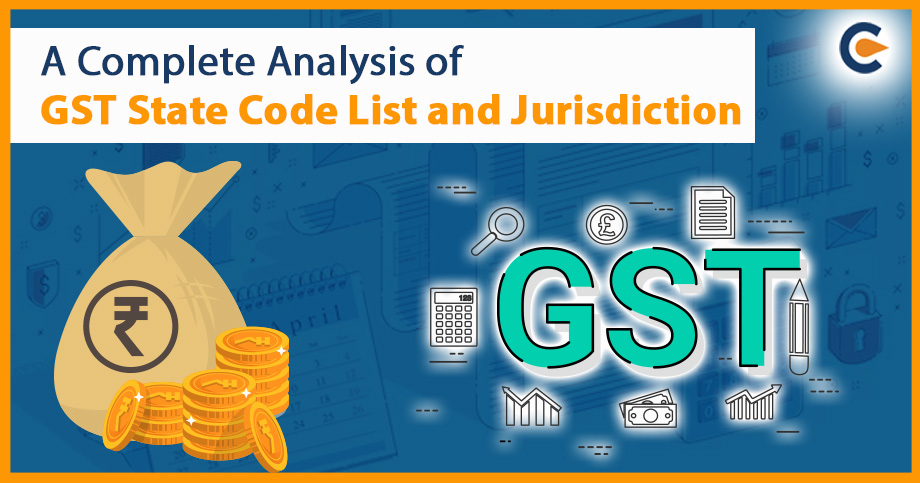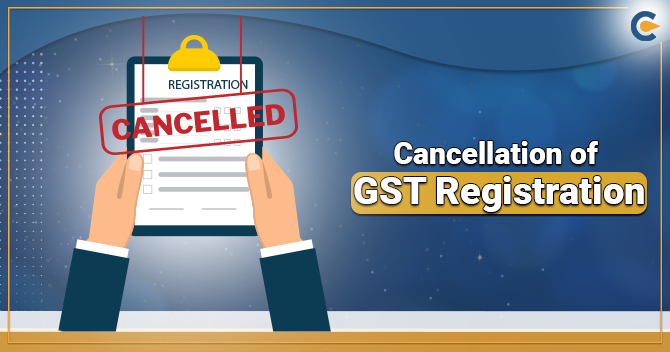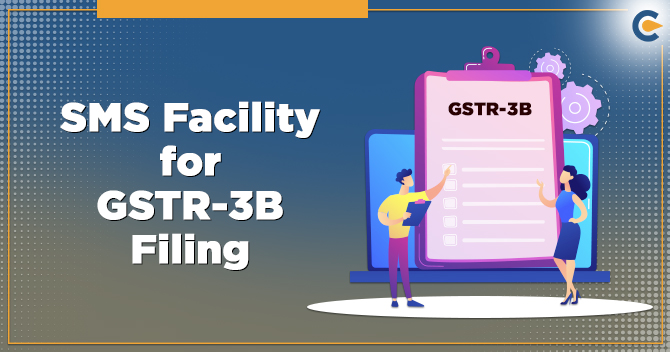The overwhelming majority of goods and services provided for domestic use are subject to the value added tax (VAT) known as the goods and services tax (GST). GST is levied on consumers and remitted by the companies that provide the government with goods and services. Nevertheless, those who are against the GST argue that it is a regressive tax since it has the potential to have a disproportionate effect on persons whose income belongs to the middle class. Some people who oppose the GST believe that it would make income inequality worse and will add to social and economic inequities. Several governments have responded to these concerns by adopting GST exclusions or lowering GST rates on basics such as food and healthcare. In order to alleviate some of the burden that the GST places on those with lower incomes, several countries have instituted GST credits or refunds. In this write-up, we will discuss GST State Code List and Jurisdiction.
GST Goals
- Several indirect taxes that were in force previous to the GST have been replaced. The benefit of a single tax is that it guarantees that each state maintains the same rate for a particular product or service. Tax administration is made easier by the Central Government’s establishment of tax rates and regulations. Two examples of basic standards that may be implemented are electronic waybills for the transportation of goods and electronic invoicing for business transactions. When taxpayers are relieved of the strain of several return forms and deadlines, tax compliance is also boosted. Compliance with indirect taxes should be standardized.
- In the past, many locations along the supply chain in India were subject to the imposition of several indirect taxes. The federal government was in charge of collecting some taxes, while individual states were in charge of collecting others. For both goods and services, there was no one, centralized tax. As a result, GST was implemented. GST incorporates all main indirect taxes. The government’s ability to administer taxes has been made easier, and the cost of taxpayer compliance has been lowered as a result.
- Eliminating the domino effect that was generated by many taxes was one of the key goals of the GST. Tax payers were unable to utilize tax credits from one indirect tax against another in the past owing to differences in indirect tax law. For example, the excise taxes that were paid during the manufacturing process could not be subtracted from the VAT that was owed upon the sale of the product. This resulted in a tax cascade. GST only applies to the net value added at each stage of the supply chain. As a direct result of this change, the domino effect of taxes has been significantly reduced, and it is now possible to more easily transfer input tax credits across different product and service categories.
- GST regulations in India is substantially more stringent than any of the indirect tax standards that came before it. Only invoices filed by the taxpayer’s respective suppliers are eligible for input tax credits under GST. This considerably lowers the likelihood of fraudulent invoices being submitted for input tax credit. The use of electronic billing has brought about an even greater improvement towards the achievement of this goal. Since the Goods and Services Tax (GST) is a countrywide tax with a centralized monitoring system, the process of identifying and prosecuting tax evaders is both much more expedient and effective. As a direct consequence of the GST, there has been a significant reduction in the amount of tax fraud and tax evasion.
- India’s tax base was expanded through GST. A company’s annual gross sales must meet a certain level before it is required to register in accordance with the various tax requirements. As a single, all-encompassing tax on both goods and services, GST has boosted the number of firms that are tax registered. In a similar vein, more stringent limitations on input tax credits have helped to the process of bringing enterprises that were previously exempt from taxation into the fold. This has been accomplished by bringing these businesses into the fold. Take the building sector in India into consideration.
- Since there were a large number of tax authorities and a large number of tax laws, it used to be rather difficult for taxpayers to deal with all of these factors. Notwithstanding the fact that returns may be filed electronically, the majority of the evaluation and reimbursement procedures took place offline. This was the case for both processes. GST transactions are now nearly exclusively processed online. The complete operation, beginning with registration and continuing with the generation of an e-way bill, may be done with the press of a button. It has greatly simplified the process of complying with tax regulations and dramatically improved the overall convenience of doing business in India.
GST State Code List and Jurisdiction
GST is a consumption tax that is applied to the sale of both goods and services. This bill has repealed or replaced a significant number of India’s former tax laws. GST is a globally applicable tax.
Purpose of the GST State Code
- The GST Code supports the government in deciding whether to impose a taxpayer or business entity IGST, SGST, or CGST.
- The buyer’s GST state code may be determined using the customer’s Goods and Services Tax Identity Number, which is included in the “Place of Supply” section of the GST invoice.
- If the buyer and seller have different state codes, the IGST will be charged as a penalty.
- In the event that the two-state codes are identical, the SGST as well as the CGST shall be applied.
- A taxpayer will register for GST and submit invoice information in GST returns using the code list.
GST State Code List Requirements
Every GST taxpayer must be aware of the proper GST State codes, since they are widely utilized in GST compliance and adjudication. Below mentioned are some utilizations of GST state code:
I) GST Registration
The applicant is required to provide information that is both correct and complete in order to get a lawful GST registration. State and central jurisdictions for the primary site of the corporation are an illustration of important information. The officer investigates the taxpayer’s claims. A GSTIN with the appropriate GST state code is subsequently given to the applicant.
II) Return Report
In their monthly or quarterly GSTR-1/IFF filings, ordinary taxpayers are required to provide information on B2B invoices, including GST IN. For buyers, the GSTIN is used to send these particulars to the GSTR-2A and GSTR-2B.
Unless it is automatically filled in from the e-invoice site, there is no mechanism or validation on the GST portal[1] to identify whether a tax invoice containing a particular buyer’s GSTIN is correctly registered in GSTR-1/IFF.
III) GST Invoice
For effective billing and e-invoicing under GST, the GST state code becomes vital. The GSTINs of the buyer, seller, and consignee each have the relevant state codes, which are utilized to establish the location of the transaction. In conclusion, the kind of GST that must be paid will vary based on whether the transaction is conducted within the same state or across states.
Consider the circumstance in which a seller supplies the buyer’s GSTIN with the wrong GST state code on the invoice. As a consequence of this, the incorrect location of the source of supply may result in the incorrect application of IGST rather than CGST and SGST, or vice versa. If the seller does not follow the legal requirements for e-invoicing, the IRN may be cancelled due to the incorrect state code GST and then they will need to re-raise the invoice.
GST State Code List
| Sr. No. | State Name | Alpha Code | GST State Code |
| 1. | Andaman and Nicobar Islands | AN | 35 |
| 2. | Andhra Pradesh | AP | 37 |
| 3. | Arunachal Pradesh | AR | 12 |
| 4. | Assam | AS | 18 |
| 5. | Bihar | BR | 10 |
| 6. | Chandigarh | CH | 4 |
| 7. | Chattisgarh | CG | 22 |
| 8. | Dadra and Nagar Haveli | DN | 26 |
| 9. | Daman and Diu | DD | 25 |
| 10. | Delhi | DL | 7 |
| 11. | Goa | GA | 30 |
| 12. | Gujarat | GJ | 24 |
| 13. | Haryana | HR | 6 |
| 14. | Himachal Pradesh | HP | 2 |
| 15. | Jammu and Kashmir | JK | 1 |
| 16. | Jharkhand | JH | 20 |
| 17. | Karnataka | KA | 29 |
| 18. | Kerala | KL | 32 |
| 19. | Ladakh | LA | 38 |
| 20. | Lakshadweep | LD | 31 |
| 21. | Madhya Pradesh | MP | 23 |
| 22. | Maharashtra | MH | 27 |
| 23. | Manipur | MN | 14 |
| 24. | Meghalaya | ML | 17 |
| 25. | Mizoram | MZ | 15 |
| 26. | Nagaland | NL | 13 |
| 27. | Odisha | OR | 21 |
| 28. | Other Territory | OT | 97 |
| 29. | Puducherry | PY | 34 |
| 30. | Punjab | PB | 3 |
| 31. | Rajasthan | RJ | 8 |
| 32. | Sikkim | SK | 11 |
| 33. | Tamil Nadu | TN | 33 |
| 34. | Telangana | TS | 36 |
| 35. | Tripura | TR | 16 |
| 36. | Uttar Pradesh | UP | 9 |
| 37. | Uttarakhand | UA | 5 |
| 38. | West Bengal | WB | 19 |
| 39. | Foreign Country | FC | 96 |
GST Jurisdiction
When a taxpayer registers on the GST Portal, they are also required to enter details regarding their GST jurisdiction. With the GST platform’s step-by-step instruction, acknowledging your authority has become substantially easier.
Classification of GST Jurisdictions
The two categories of GST jurisdictions are State Jurisdictions and Central Jurisdictions.
- In the context of this discussion, the term “State Jurisdictions” refers to the many legal systems that have been analyzed by the relevant State government or that are now undergoing evaluation. On the other hand, the jurisdictions that fall within the purview of the Central Government are known as the Central Jurisdictions.
- The State and Central jurisdictions are specifically mentioned in CGST Circular No. 21/2017, which was released on September 20th, 2017. In accordance with the criteria, the state government would be in possession of ninety percent of taxpayers whose combined income was less than one and a half crores in Indian rupees. The remaining 10% will be held by the Central Government.
- The remaining fifty percent of taxpayers who have an annual income of at least 1.5 crores Indian Rupees (INR) would be given to the State Government, while the remaining fifty percent would be given to the Central Government.
- Taxpayers are dispersed state by state. This is done by the use of stratified random sampling, which takes into account the taxpayer’s location and form of registration.
As a direct consequence of this, the GST jurisdictions have been split up into the following four groups, which are given in descending size order:
Zone,
- Commissionerate’s,
- Division Offices, and
- Range Offices
Identifying GST Jurisdiction
There are numerous techniques for identifying the jurisdiction of a GSTIN or taxpayer.
While registering for GST, the taxpayer is required to submit their exact business address. It is essential information for correctly identifying the jurisdiction when declaring it in the GST registration application, and it contributes to the prevention of any issues in the future.
A taxpayer may be asked to choose the applicable State jurisdiction while registering for GST. Tax payers are required to look up the ward and circle on the website for the applicable State commercial tax, VAT, or Sales tax in order to determine the state over which the department has authority.
Information about the central authority:
- In the same manner as picking his state jurisdiction, the taxpayer must also choose his Central jurisdiction and range. The CBIC offers a special portal named “Know Your Jurisdiction” for identifying Central jurisdiction.
- Choose the Zone, then click the “+” sign next to the Commissionerate that belongs to the firm. Click the plus sign that is located next to the department description that most accurately describes the physical location of your company.
- Choose an item from the drop-down menu whose value is included inside the brackets that you have specified. When a user clicks on a tile, more context is shown so that he may learn more about it.
- The initial letter of the taxpayers’ names in a certain pin code or set of pin codes may be used to identify the jurisdiction.
- After registering, a taxpayer may consult the certificate that was given to him (Form REG-06) at any time to identify his State Jurisdiction and Central Jurisdiction.
What is the Goods and Services tax Jurisdictional Officer’s contact information?
- Choose “Services” and then “User services” on the GST website of the government.
- Choose the ‘Contacts’ button.
- Include information from your jurisdiction, such as Central or State, the name of the tax official, the person’s designation, Commissionerate, Division, Range, and any further information.
- After entering the captcha code, click the “Search” button.
- You may want to try choosing “Search Office Address” instead of “Contacts” if you’re looking for an office address.
- Choose State or Centre as the category, then select State from the drop-down option, and then enter the postal code.
- To see the results, click the ‘Search’ button.
Where Does the GST Need a State Code?
- Every taxpayer subject to GST must be aware of the right GST State codes for each State and Union Territory, as they are regularly utilized in different GST compliance and adjudication procedures. For the following reasons, State Code GST is essential:
- To secure a genuine GST registration, the applicant must supply precise and comprehensive information. State and central jurisdictions for the primary corporate location are two instances of such crucial information. The officer validates the taxpayer’s information. The applicant is then given a GSTIN that includes the relevant GST state code.
- Under GST, the state code is essential for correct invoicing and e-billing. The applicable state codes found in the genuine GSTINs of the buyer, seller, and consignee are utilized to pinpoint the location of the transaction. Finally, the location of supply dictates the sort of GST to be levied, depending on whether the transaction is intrastate or interstate.
- Imagine that the seller includes the GSTIN of the purchaser on the invoice, but makes the mistaken decision to utilize the incorrect GST state code. The erroneous site of supply is thus determined, and IGST is levied in lieu of CGST and SGST, or vice versa.
- If the seller adheres with the requirements for e-invoicing, an inaccurate state code GST might result in the IRN being removed, necessitating the creation of a new invoice.
- Lastly, you must file GSTR-1 and GSTR-3B returns, Ordinary taxpayers must supply B2B invoice data, including GSTIN, in the GSTR-1/IFF sent monthly or quarterly. Based on the GSTIN, these particulars are sent on to the relevant GSTR-2A/ GSTR-2B of the purchasers.
- Unless an invoice is generated automatically via the use of the e-invoice site, there is no process or validation on the GST portal to identify whether or not a tax invoice including a specific buyer’s GSTIN has been appropriately registered in GSTR-1/IFF. The improper person or GST IN may find tax credit in GSTR-2A/2B rather than the legitimate buyer if the seller provides the erroneous GST State code when submitting GSTIN in invoice information in GSTR-1/IFF.
Conclusion
Small and medium-sized businesses may profit from the Goods and Services Tax (GST) in a number of ways. Many people who want to start their own businesses lack the resources necessary to make their ideas a reality. Small company owners may be able to focus more of their attention on making plans for development and expansion as well as gaining easier access to the national market if they shift their focus away from efforts to reduce taxes at the state level.
Read our Article:Detailed Guidelines For Arrest And Bail Under GST











